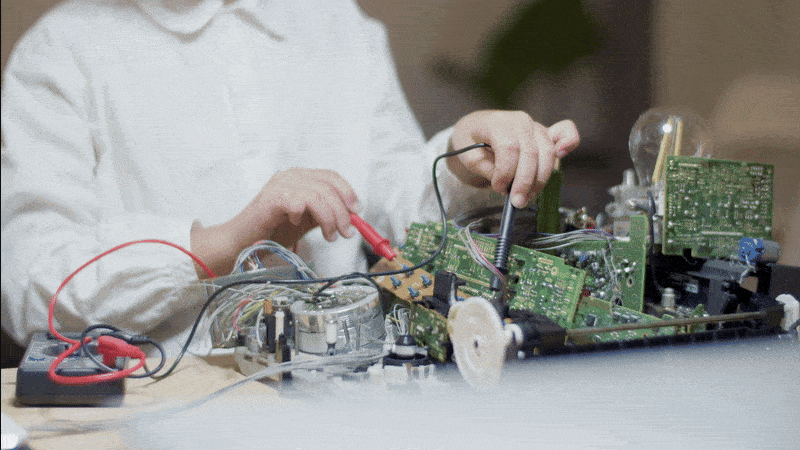The VLSI (Very Large Scale Integration) industry continues to be one of the most dynamic and high-growth sectors in the tech world. With the global semiconductor race heating up in 2025—thanks to AI, 5G, automotive electronics, and IoT—there’s never been a better time to break into the VLSI domain. But here’s the catch: VLSI is vast and complex, especially for electronics or computer science graduates starting fresh. That’s why having a focused 90-day study plan can help you build a strong foundation, gain project-ready skills, and become interview-ready for internship and fresher roles. Let’s build a smart, day-wise roadmap that includes free + paid resources, practical exposure, and realistic goals based on 2025’s learning landscape. Number systems, Boolean algebra, and logic gates Combinational and sequential circuits Flip-flops, multiplexers, encoders, decoders Introduction to VLSI – Moore’s Law, CMOS tech, IC fabrication NPTEL: Digital Circuits by IIT professors All About Circuits (website) for basic digital theory Khan Academy – Boolean logic and flip-flops VLSIFirst Daily concept notes (max 2 pages/day) Solve 10 MCQs daily from previous GATE or VLSI entrance papers Create a digital logic circuit using Logisim HDL introduction (choose Verilog or VHDL) Syntax, operators, modules, ports, always blocks Writing and simulating simple designs like full adders, counters, FSMs Icarus Verilog + GTKWave (Free & light-weight) EDA Playground (browser-based simulation platform) ModelSim (Student edition) – for deeper simulation practice VLSIFirst.com: “Verilog Essentials for Beginners” (hands-on lab access) Udemy: “Learn Verilog HDL from Scratch” Daily mini HDL assignments Simulate 1–2 modules every 2 days Join Discord/Telegram groups for VLSI learners for peer support RTL to gate-level synthesis flow Constraints (SDC), setup & hold time concepts Clocking and timing violations Basic STA commands (via Synopsys/Vivado) Xilinx Vivado WebPack (Free for practice) Synopsys Design Compiler (if available via institute/partner access) VLSI First PDFs + LinkedIn learning tutorials Attend free STA workshops by industry mentors Simulate timing paths Analyze synthesis reports Understand where design fails timing and why 8-bit ALU design UART transmitter/receiver Simple vending machine FSM Stopwatch or Timer using FSM logic Use Vivado or EDA Playground for project simulation GitHub to document and publish your project portfolio Floorplanning, placement, clock tree synthesis (CTS), routing Tools like OpenLANE (open-source flow) Optional: “Intro to Physical Design” course on Udemy Record simulation videos and share on LinkedIn with code snippets for visibility Scan chains, DFT, ATPG basics CMOS inverter, stick diagrams, design rules Layout of NAND, NOR gates LVS/DRC intro Microwind or Magic VLSI for layout practice Online CMOS design simulators ASIC World for DFT practice questions VLSIFirst workshops for layout + CMOS basics (includes doubt sessions) 2–3 Verilog mini-projects with simulation outputs Keywords like "Synthesis", "STA", "DFT basics", "Vivado", "RTL design" GitHub + LinkedIn profile with learning documentation Use Novoresume or FlowCV to build a modern, ATS-friendly resume Revise basic questions on logic design, HDL syntax, FSM Practice GATE-level questions on timing, CMOS, and delay calculations Mock interviews via online communities or alumni mentors Join job portals like VLSIJobs and LinkedIn groups Target internships and entry-level jobs from Indian startups or Tier-2 companies in Bangalore, Hyderabad, Noida Keep practicing, even after 90 days—VLSI is a long journey but worth it AI Meets VLSI: Start exploring how AI/ML is used in EDA tools. Follow Industry News: Semiwiki, AnandTech, and Design&Reuse are good sources. Stay Consistent: Even 2 focused hours a day is enough with the right structure. Get Feedback: Post progress on LinkedIn and ask for feedback from VLSI seniors. Learn Git: Knowing Git version control will help with project documentation and collaboration. You don’t need to spend lakhs to learn VLSI. With the right blend of discipline, digital resources, and community support, you can go from beginner to job-ready in just 90 days. The semiconductor industry is booming, and skilled VLSI engineers are in high demand across domains like AI chips, automotive SoCs, and edge devices. So, grab your notebook, power up your laptop, and start building your VLSI future today—90 days from now, you'll be amazed at how far you've come.Week 1–2: Foundation & Core Concepts (Day 1–14)
Goal: Understand the fundamentals of digital electronics and VLSI design.
Topics to Cover:
Suggested Free Resources:
YouTube Channels:
Tasks:
Week 3–4: HDL Programming Basics (Day 15–28)
Goal: Learn VHDL/Verilog and basic simulation.
Topics to Cover:
Tools to Install:
Paid Courses to Consider:
Practice Ideas:
Week 5–6: Synthesis & Static Timing Analysis (Day 29–42)
Goal: Transition from design to real-time synthesis & STA concepts.
Topics to Cover:
Tools:
Practice Resources:
Outcome:
Week 7–8: RTL Projects + Intro to Physical Design (Day 43–56)
Goal: Apply HDL to real projects + peek into backend VLSI.
Suggested Projects:
Tools:
Learn Basics of Physical Design:
Tip:
Week 9–10: DFT, CMOS & Layout Concepts (Day 57–70)
Goal: Broaden your exposure and stand out in interviews.
Topics:
Practice Tools:
Paid Options:
Week 11–12: Resume, Mock Interviews, and Final Prep (Day 71–90)
Goal: Become placement-ready and confident for real opportunities.
Must-Haves in Your Resume:
Templates:
Interview Prep:
Final Checklist:
Tips for Success:
Final Thoughts

Why VLSIFIRST Is the Best Career Launchpad for ECE, EEE & CSE Graduates
Discover why ECE, EEE, and CSE graduates choose VLSIFIRST for high-paying VLSI careers. Learn how industry-ready training, projects, and placements accelerate your journey.

Engineering Completed? How VLSIFIRST Helps You Enter VLSI Faster
Discover how VLSIFIRST helps engineering graduates fast-track their VLSI careers with industry-ready training, projects, mentorship, and job-oriented skill development.

Clock Gating vs Power Gating: Implementation, RTL Flow & Verification Guide
Learn how to implement clock gating and power gating with RTL design steps, backend changes, UPF flow, and a full verification checklist for efficient low-power VLSI design.
_11zon.jpg)
What to Do After Engineering? Why VLSIFIRST Leads Chip Design Careers
Discover why VLSIFIRST is becoming the top choice for engineering graduates pursuing VLSI and semiconductor careers. Explore job roles, growth, and industry-ready training benefits.

VLSI Career Roadmap for Engineering Graduates: Step-by-Step Guide
A complete VLSI career roadmap for engineering graduates. Learn skills, domains, tools, and steps to become a successful semiconductor engineer in the chip design industry.
Hours
Copyright 2025 © VLSI Technologies Private Limited
Designed and developed by KandraDigitalCopyright 2025 © VLSI Technologies Private Limited
Designed, Developed & Marketing by KandraDigital
